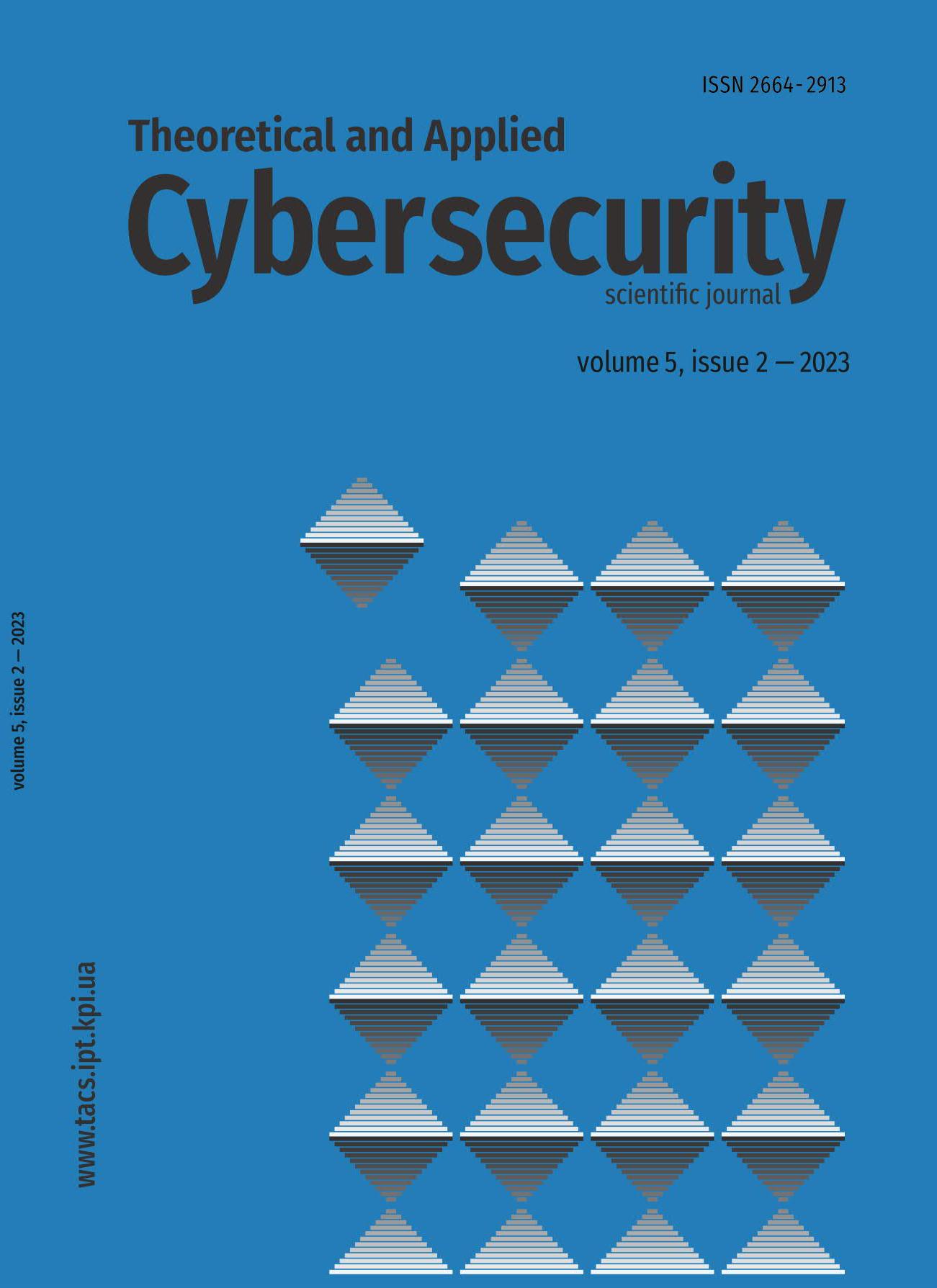On Inverse Protocols of Post Quantum Cryptography Based on Pairs of Noncommutative Multivariate Platforms Used in Tandem
DOI:
https://doi.org/10.20535/tacs.2664-29132023.2.290413Abstract
Non-commutative cryptography studies cryptographic primitives and systems which are based on algebraic structures like groups, semigroups and noncommutative rings. We continue to investigate inverse protocols of Non-commutative cryptography defined in terms of subsemigroups of Affine Cremona Semigroups over finite fields or arithmetic rings Zm and homomorphic images of these semigroups as possible instruments of Post Quantum Cryptography. This approach allows to construct cryptosystem which are not public keys, when protocol finish correspondents have mutually inverse transformations on affine space Kn or variety (K*)n where K is the field or arithmetic ring.
The security of such inverse protocol rests on the complexity of word problem to decompose element of Affine Cremona Semigroup given in its standard form into composition of given generators. We discuss the idea of usage combinations of two cryptosystems with cipherspaces(K*)n and Kn to form a new cryptosystem with the plainspace(K*)n, ciphertextKn and nonbijective highly nonlinear encryption map.
Downloads
Published
Issue
Section
License
Authors who publish with this journal agree to the following terms:
Authors retain copyright and grant the journal right of first publication with the work simultaneously licensed under a Creative Commons Attribution License that allows others to share the work with an acknowledgement of the work's authorship and initial publication in this journal.
Authors are able to enter into separate, additional contractual arrangements for the non-exclusive distribution of the journal's published version of the work (e.g., post it to an institutional repository or publish it in a book), with an acknowledgement of its initial publication in this journal.
- Authors are permitted and encouraged to post their work online (e.g., in institutional repositories or on their website) prior to and during the submission process, as it can lead to productive exchanges, as well as earlier and greater citation of published work (See The Effect of Open Access).

